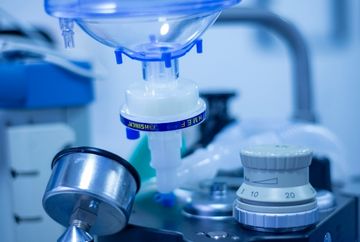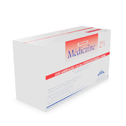ANESTHESIOLOGY
What is anesthesiology ?
Anesthesiology is a medical specialty focused on pain relief during the perioperative period (before, during, or after surgery). In fact, according to the American Society of Anesthesiologists (ASA), anesthesiology is defined as follows : « The practice of medicine dedicated to the relief of pain and complete care of the surgical patient before, during, and after surgery ».
The drugs used are called anesthetics, and the physician trained in this specialty is called an anesthesiologist.
WHAT ARE ANESTHETICS?
The drugs used to block pain are called anesthetics. Different types of anesthesia work in different ways. Some anesthetic drugs numb certain parts of the body, while others numb the brain to induce sleep for more invasive surgical procedures, such as those involving the head, chest, or abdomen.
WHAT ARE THE TYPES OF ANESTHESIA ?
The anesthesia that your healthcare provider uses depends on the type and scope of the procedure. The options include :
- Local anesthesia: This treatment numbs a small part of the body. Examples of procedures in which local anesthesia might be used include cataract surgery, a dental procedure, or a skin biopsy. You are awake during the procedure.
- Regional anesthesia: Regional anesthesia blocks pain in a larger part of your body, such as a limb or everything below your chest. You may be conscious during the procedure or have sedation in addition to the regional anesthetic. Examples include epidural for pain relief during childbirth or a cesarean section (C-section), spinal for hip or knee surgery, or a nerve block for hand surgery.
- General anesthesia: This treatment makes you unconscious and unaware of pain or other stimuli. General anesthesia is used for more invasive surgical procedures.
- Sedation: Sedation relaxes you to the point where you will have a more natural sleep but can be easily aroused or awakened. Light sedation can be prescribed by the person performing your procedure, or with a regular nurse, if they both have training to provide moderate sedation. Examples of procedures performed with light or moderate sedation include cardiac catheterization and some colonoscopies. Deep sedation is provided by an anesthesia professional because your breathing may be affected with stronger anesthetic drugs, but you will be more asleep than with light or moderate sedation. Although you are not completely unconscious, you are not as likely to remember the procedure.
HOW IS ANESTHESIA ADMINISTERED ?
Depending on the procedure and the type of anesthesia needed, your healthcare provider may deliver anesthesia by :
- Inhaled gas.
- Injection, including injections or intravenous (IV) administration.
- Topical liquid (applied to the skin or eyes).
- Spray or patch.











